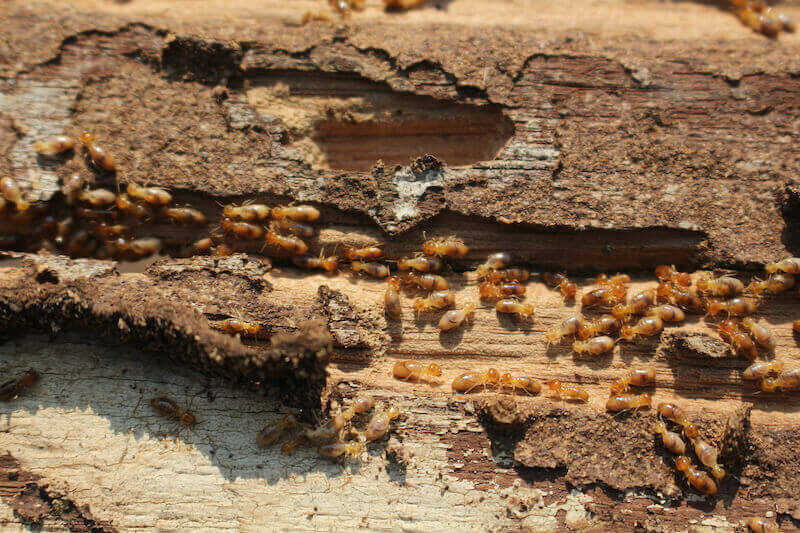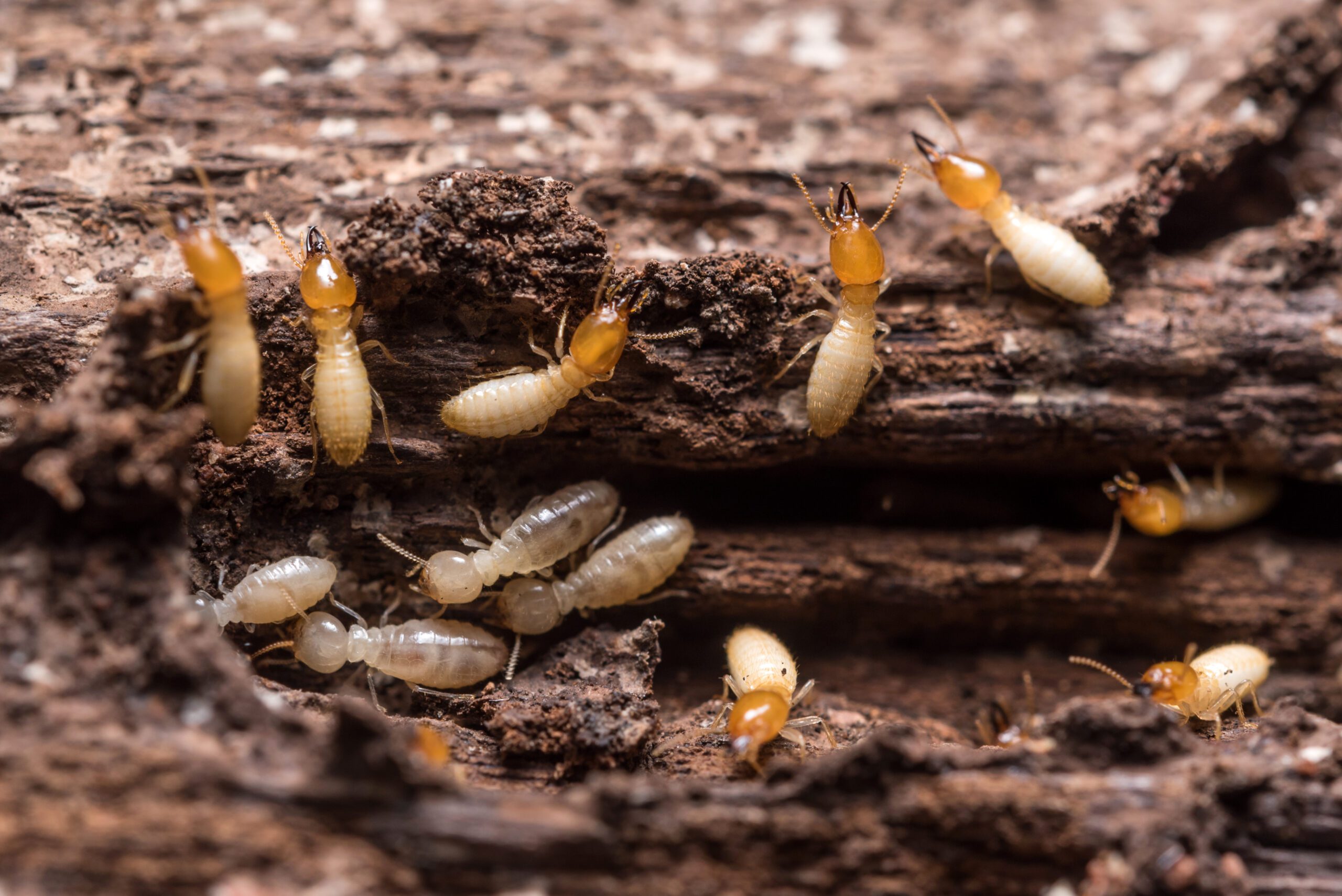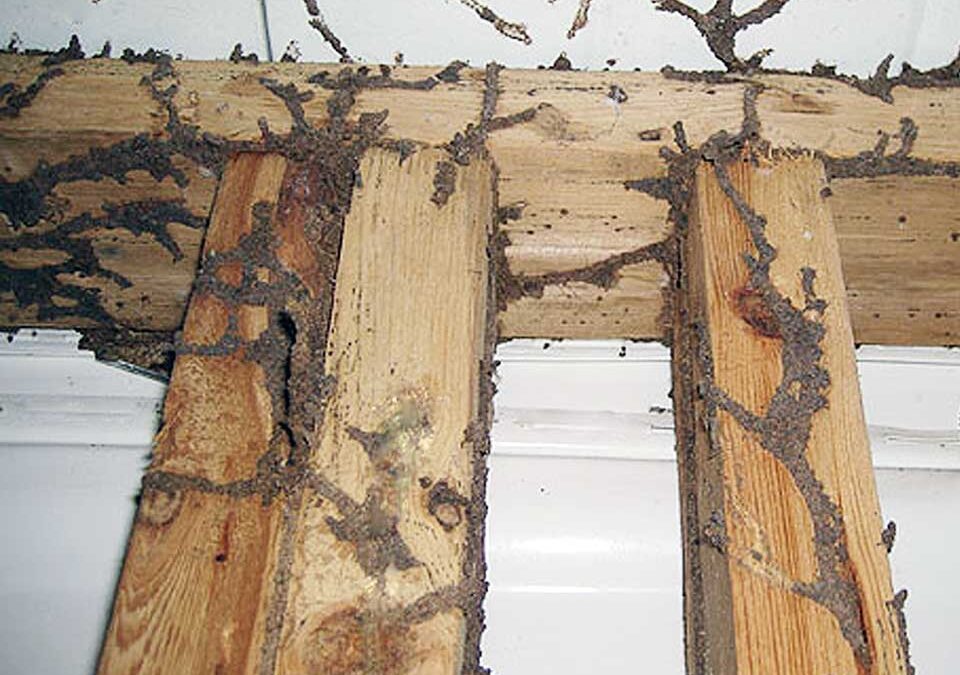Termite Treatments in Florida:
Exterminator Services for Boca Raton, Deerfield Beach, and Delray Beach
Florida’s subtropical warmth and high humidity invite termite activity all year long, a stark contrast to states where harsh winters curb infestations seasonally. For property owners in Boca Raton, Deerfield Beach, and Delray Beach, dealing with termites becomes an ongoing concern to prevent structural damage and preserve peace of mind. Whether these insects show up in attic timbers, exterior walls, or hidden crawl spaces, a timely response from a trusted termite exterminator can save thousands in repairs and maintain a safe indoor environment. This service page explores why termites thrive in Florida, how to spot the first signs of infestation, and what a comprehensive termite treatment approach looks like. By focusing on early detection, proper eradication methods, and prevention strategies, homeowners and businesses alike can ward off these destructive pests.
Why Florida Encourages Termite Populations

- Year-Round Mild Climate
In cooler regions, extended sub-freezing temperatures naturally limit termite reproduction and foraging. But in Florida’s subtropical environment, winter rarely brings the kind of cold that disrupts termite colonies. With no significant dormancy period, termites can remain active, expanding their territories and feeding on wood uninterrupted. - High Humidity and Frequent Rainfall
Many termite species depend on moisture to keep their tunnels and colonies viable. Florida’s humidity, coupled with steady rainfall, ensures that wood—especially if unprotected—stays damp enough for subterranean or dampwood termites to move through it and maintain soft, decayed feeding channels. Even small leaks in foundations or roofing can give termites the foothold they need. - Plentiful Food Sources
Wooden beams, decking, and landscaping timbers all present attractive targets for termites. In coastal cities like Boca Raton or Delray Beach, the combination of new construction, remodeling projects, and older homes with wooden features offers more potential feeding sites. If property owners store wood piles or mulch too close to foundations, subterranean termites may build mud tubes directly from soil into structural wood. - Minimal Seasonal Dormancy
Because Florida rarely has multi-week freezes, termites do not experience the extended break that naturally reduces colonies in northern states. Instead, they breed for months on end, potentially leading to larger colony sizes. Left unchecked, a minor incursion can evolve into a severe infestation across multiple areas of a structure. - Urban and Suburban Growth
Communities around Boca Raton, Deerfield Beach, and Delray Beach are constantly expanding, with new homes and businesses emerging. Construction can disturb termite habitats, encouraging them to relocate into fresh structures. Additionally, older buildings with cracks or water damage may inadvertently provide easy entry points for hungry colonies.
Common Termite Species in Florida
- Subterranean Termites
The most prevalent type, these termites build large colonies beneath the ground and travel through mud tubes to reach wood. Their foraging tubes can span long distances, allowing them to assault a home’s subfloor or foundation unnoticed until damage emerges. Subterranean termites are often the main culprit when extensive structural problems occur. - Drywood Termites
Unlike subterranean termites, drywood species do not require soil contact. They infest dry wood above ground, such as rafters, attic beams, or even wooden furniture. Drywood termites typically leave small pellet-like droppings (frass) near infestation sites, one of the best clues to detect them. - Formosan Subterranean Termites
A highly aggressive and destructive variant of subterranean termite, the Formosan termite is known for building massive colonies and consuming wood at a faster rate. They often construct formidable mud carton nests within walls or attics, leading to heightened structural compromise in less time than other species. - Dampwood Termites
Less common in well-maintained structures, dampwood termites favor rotting or water-logged wood. They’re more likely to inhabit stumps, logs, or severely moist wooden siding. While typically found in yards or unoccupied areas, they can pose localized threats if water intrusion persists.
Indicators of a Termite Infestation
- Swarming
The most dramatic sign occurs when winged termite reproductives (alates) swarm from their colony to start new ones, discarding their wings in the process. Finding piles of translucent wings on windowsills or near door frames is a red flag that a colony may be active close by. - Mud Tubes
Subterranean termites build pencil-thin tunnels of soil and saliva along foundations or interior walls to stay moist en route to food. Spotting even a few mud tubes suggests termites are foraging into or under the property. - Frass (Droppings)
Drywood termites push out hexagonal pellets that collect beneath infested wood. These tiny, grain-like piles often appear near window ledges, attic beams, or baseboards where drywood termites feed in dryness. - Hollow or Damaged Wood
Affected wood might still look intact on the outside, but tapping on it produces a hollow sound. Small holes or cracks on the wood surface could reveal extensive tunneling within.
Warping or Bubbling Paint
Moisture buildup from termite tunnels behind walls can cause paint to bubble. While not a guarantee of termites, it can be among early signs, prompting more thorough inspection.

Consequences of Ignoring Termites
- Structural Weakening
Termites can compromise load-bearing beams, floor joists, or roof supports. The slow erosion of internal wood puts the stability of the building at risk, leading to potential sagging floors or cracking walls. - Rising Repair Bills
Allowing termites free rein typically multiplies restoration costs. Replacing large sections of wood or re-building entire subfloor systems is far more expensive than early detection and targeted treatments. - Property Value Decline
Termite damage can scare off prospective buyers or significantly lower an appraisal. Florida law often mandates termite inspections before real estate transactions, making an untreated infestation a major obstacle. - Business Disruption
In commercial settings—restaurants, offices, or shops—termites can hamper operations if customers notice mud tubes or damaged wooden decor. Addressing the problem promptly is vital to maintaining a trustworthy reputation.
Termite Exterminator Services: Approaches and Strategies
- Inspection and Assessment
A thorough property check remains the starting point of any successful termite control plan. By identifying the specific termite species and their colony location (subterranean, drywood, or dampwood), a skilled exterminator chooses from a range of treatments. These might include examining crawl spaces, attics, or yard perimeters to spot mud tubes, droppings, or hollowed wood. - Soil Treatments (Subterranean Termites)
For subterranean colonies, creating a protective chemical barrier around the foundation is common. Technicians trench or drill around the building’s perimeter, applying termiticides that block termite entry. This method curtails active colonies and also prevents future colonies from attacking the structure. - Baiting Systems
Bait stations containing slow-acting toxic materials are installed at intervals. Worker termites pick up the bait, bring it back to the colony, and share it, progressively decimating the population. This approach often suits large or unpredictable subterranean infestations. Bait stations also help with ongoing monitoring once the immediate threat diminishes. - Fumigation (Drywood Termites)
For large-scale drywood termite invasions spanning multiple areas, fumigating the building—tenting it and releasing a gas lethal to termites—can be the most thorough. This measure saturates all hidden galleries with fumigant, eradicating adult termites, soldiers, and queens. After aeration, residents can safely return. - Spot or Localized Treatments
For minor drywood termite infestations limited to one room or piece of furniture, direct application of termiticides or heat can target the colony. While this is less disruptive than fumigation, it’s critical to ensure no other nest pockets exist elsewhere in the structure. - Moisture Reduction
Many termite species rely on consistent humidity or standing water. Repairing leaky roofs, mending plumbing issues, or improving drainage around the foundation robs termites of crucial moisture. Sealing cracks and using proper ventilation also hamper insect growth.
Serving Boca Raton, Deerfield Beach, and Delray Beach
Our termite treatments and exterminator expertise cater to homeowners, businesses, and property managers in Boca Raton, Deerfield Beach, and Delray Beach. Florida’s coastal breeze and moderate climate unify these communities, making termite activity a year-round threat:
- Boca Raton: With its mix of upscale properties and commercial developments, a termite incursion could undermine structural integrity or add stress to real estate transitions.
- Deerfield Beach: Known for waterfront living and thriving businesses, termite presence near piers, wood decks, or older structures can escalate swiftly.
- Delray Beach: This bustling locale features art districts and lively neighborhoods. In older homes or buildings with wood-based architecture, unchecked termite activity can lead to expensive overhauls.
By addressing termite infestations promptly in these areas, residents maintain sturdy homes, a stable property value, and peace of mind.

Why Choose Our Termite Control Solutions
- Localized Knowledge
Florida’s environment calls for tailored termite solutions. Our approach accounts for the region’s climate, building norms, and recognized termite species. This ensures treatments match local conditions rather than employing generic, one-size-fits-all methods. - Precision and Safety
Treatments like soil termiticide injections or fumigation require thorough planning. A professional exterminator uses carefully selected products that are effective against termites yet safe for occupants when applied according to best practices. - Prevention-Focused
Beyond tackling present colonies, an advanced termite control program often includes routine monitoring and recommending property improvements. By sealing cracks, eliminating moisture sources, and adjusting landscaping, owners minimize the chance of re-infestation. - Comprehensive Methods
Subterranean, drywood, or dampwood infestations differ in their approach, from trench-and-treat methods to fumigation. Depending on colony location and severity, specialists deploy the best technique, combining multiple strategies if necessary to ensure all hidden nests are addressed. - Follow-Up Inspections
Even after a successful campaign, scheduling post-treatment checkups can confirm no survivors remain and detect if new termite activity emerges. Continuous vigilance is especially crucial in Florida’s year-round breeding conditions.
Next Steps
If you see mud tubes near your foundation, hear hollow sounds when tapping wooden structures, or notice discarded wings around window sills, it’s time to act. Contact us to learn more or schedule your service. A professional termite exterminator can evaluate the severity of your infestation and propose termite treatments that swiftly protect your property. Early detection and intervention typically save homeowners from extensive damage and ongoing anxiety.
Safeguard your Boca Raton, Deerfield Beach, or Delray Beach property against Florida’s active termite populations. With an in-depth inspection and a well-crafted plan, you can enjoy lasting peace of mind, free from the hidden chomping noises and structural risks these pests bring.
Sustaining a Termite-Free Environment in Florida
Securing a property against termites in a subtropical zone requires consistent attention. When mild winters and high humidity enable year-round termite foraging, it’s unrealistic to rely on seasonal temperature drops for natural pest control. Instead, property owners gain stability through:
- Annual or Biannual Inspections
Checking for early warning signs—like droppings, shelter tubes, or slight wood damage—lets you tackle potential colonies before they become extensive. - Effective Moisture Control
Fixing roof leaks, maintaining good drainage, and ensuring no wood-soil contact in the foundation area deprive termites of vital moisture. Proper ventilation in attics and crawl spaces further deters subterranean and dampwood species. - Selective Use of Wood Products
When remodeling or adding structures, consider using termite-resistant materials or treatments that curb infestation. Pressure-treated wood or metal framing can reduce vulnerabilities. - Professional Monitoring
Installing termite bait stations or opting for routine visits from an extermination team helps maintain a watchful eye over your property. If termite activity resumes, small pockets of intrusion can be quickly squashed.
By adhering to these preventive measures and employing the services of a knowledgeable termite exterminator when necessary, you can protect your Florida home or business from extensive and costly damage. Proactive termite treatments confirm that no clandestine colonies undermine your comfort or the property’s structural soundness—vital for enjoying the best of Florida’s year-round outdoor lifestyle without the worry of unseen invaders.
